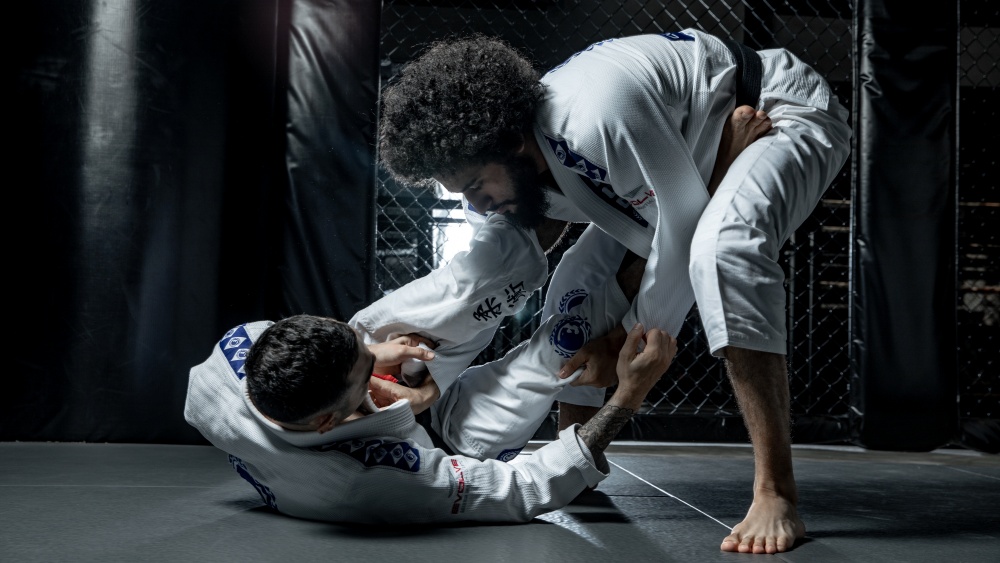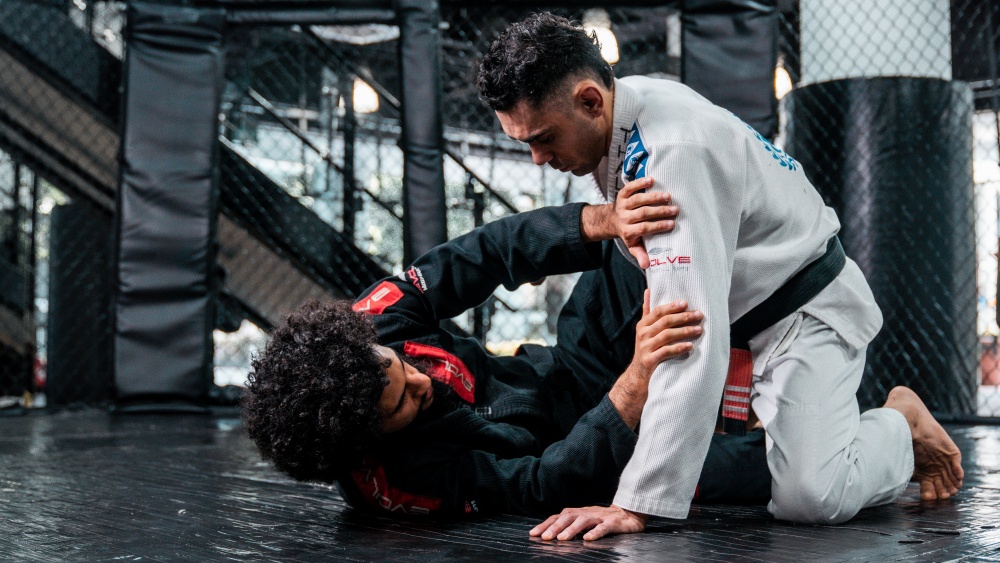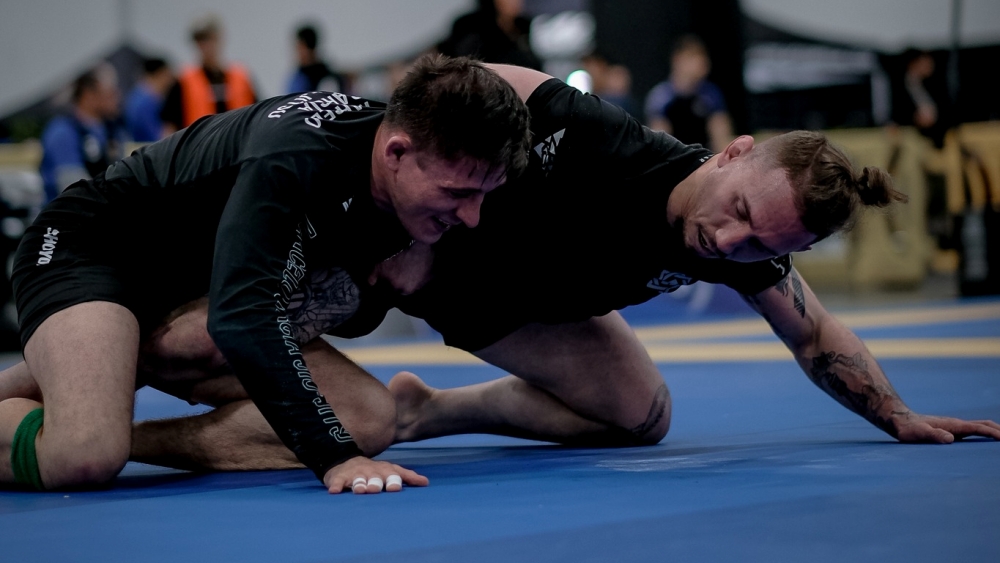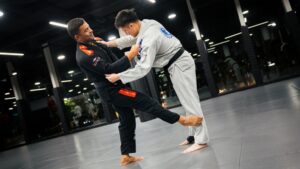Building a complete guard game in Jiu-Jitsu takes many hours of learning and experimentation. Similar to building the foundation of a house, your guard should be able to withstand threats from all sides and hold its place in the face of pressure.
The good news here is that you can create a guard game that suits your physical traits, age, and even personality. There are a variety of guards available, and it is up to you to develop your personal style.
One great example is the half butterfly guard. It is a tricky yet practical position where you can use your hooks and frames to keep yourself safe and initiate your attacks from there. Let’s explore the fundamental concepts of the half butterfly guard.
Importance Of The Guard In Jiu-Jitsu

In Brazilian Jiu-Jitsu, a guard is a position where you use a combination of frames, grips, and hooks. The guard is used to control a part of the opponent’s body, thereby limiting options for attack. Playing guard also requires the use of the legs to create strong hooks and frames. While the guard is primarily a defensive position, it is also the starting point for many attacks.
The guard passer’s job is to remove the frames, grips, and hooks so they can freely move around the legs and pin the guard player in a dominant position. BJJ demands the top and guard players to continuously work on advancing position. This means that the guard player has to keep their guard and attempt sweeps, while the top player works to open the guard with the intent to pass.
The ability to stay relatively safe off their back is a skill that every BJJ student should possess. Even though the guard passer has the advantage of gravity on their side, the guard player can actively use their limbs to entangle the opponent, allowing them to control and manage the distance.
The Half Butterfly Guard
This guard is a mix of two solid guard variants, namely the half and butterfly guard. It is similar to the half guard as you need to also stay on your side as you hook your leg to your opponent’s. The same concept of using frames, underhooks, and overhooks also applies so that you can control their posture and minimize threats of submissions and guard passes.
It is also similar to the butterfly guard because you need to insert a butterfly hook to elevate and sweep opponents over. The butterfly guard is a very powerful guard with lots of sweeping potential.
Combine these two guards, and you get a hybrid guard that is used as an in-between position. You can definitely get a lot of offensive opportunities using the half butterfly guard.
Concepts And Application
In this video, Aaron Benzrihem explains the basic concepts of the half butterfly guard. To start, he says that the main benefit of the half butterfly guard is its versatility. You can use this guard in both gi and no-gi; it is also a great tool to counter a heavy crossface.
Enter the half guard by lying down on a hip as you lock an opponent’s leg using your own. Insert your butterfly hook on the same side as the trapped leg and place it near your own calf. A cool tip here is to keep your butterfly hook active so you can easily unbalance the opponent.
Framing against the neck and the far arm is equally crucial to maintain distance and prevent your opponent from attempting common counters like the crossface and underhook. You can frame against the neck by simply using your forearm to block the neck. Alternatively, you can get a gi grip near the opponent’s collarbone as you flare your elbows against the throat.
Using the mechanics of the half and butterfly guard is what makes the half butterfly such a fantastic position. You can use your half guard to control the retreating opponent by using the hooked foot as a door stopper to prevent them from backing out.
Once your opponent decides to put pressure on you, you can now use your butterfly hook to extend, thus creating distance in an instant. Use these mechanics to constantly create kuzushi while your opponent is inside your guard. This is guaranteed to keep them on the defensive as you transition to your offensive techniques.
Attacking Options From The Half Butterfly Guard
Now let’s talk about basic attacks from the half butterfly guard. Aaron Benzrihem demonstrates three simple kimura variations you can immediately add to your game. The kimura is perhaps the best submission to learn from the half butterfly position as it is very straightforward and does not require unique attributes to pull off.
Remove the frame on your opponent’s neck and establish the kimura grip on their far arm. The setup is practically the same as the kimura from half guard. From here, Aaron breaks down his approach to finishing the submission from common defenses like grabbing the belt, tucking the arm near the hamstring, rolling counter, and many more.
This kimura series will surely elevate your half butterfly guard from a purely defensive position to a highly offensive one. If you are new to the half butterfly guard, it may be a smart idea to focus on just a couple of techniques, at least in the early stages of your development, so that you can master the fundamental movements quickly.
Conclusion
We highly recommend the half butterfly guard if you already use the half or butterfly guard as part of your game. The inherent upsides of the half butterfly perfectly complement the said guards and will help round out your bottom game. The concepts mentioned in today’s video are just an overview, but you should get a lot of value from them as they are the building blocks of the position.
Many top competitors use the half butterfly, and we suggest you should too. Try the half butterfly guard today, and let us know how it goes.
You may also like:

















